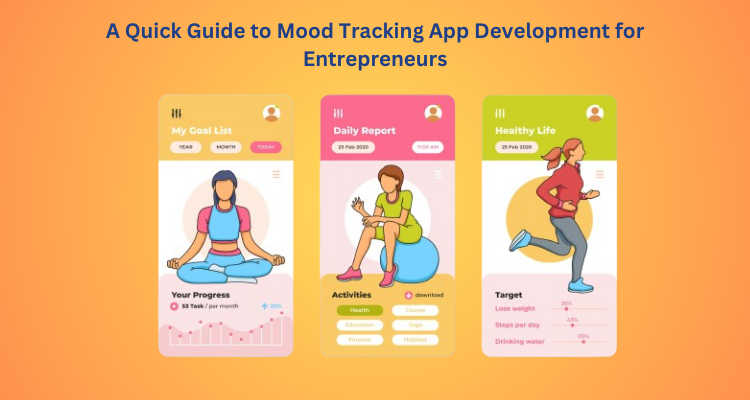
Raising hope in the expanding industry of mental health and wellbeing. Based on this information, entrepreneurs interested in this market need to know the basic concepts of the mood tracker app. This short guide provides a brief idea for the new developers to create a mood-tracking app.
Understanding the Purpose
Understanding the Purpose: A mood tracker app development is not just a mobile application. It’s a tool that empowers users to identify mood variations, understand triggers, and recognize patterns. This data can be a game-changer for users, providing insights into their mental health and guiding them toward the right actions. For entrepreneurs, it’s an opportunity to contribute to mental well-being and tap into a rapidly growing market.
Key Features to Include
- User Profiles: This should permit users to create and edit personal profiles. Interactivity improves the consumption of results and data protection.
- Mood Tracking: Allow users to enter their mood quickly. Add features like mood scales, tags, and notes to detail information.
- Analytics and Reports: Enhance and deliver mood reporting and data analytics solutions to the users. It also enhances their emotional awareness to establish when they are prone to feelings of anger and the performance progress.
- Reminders and Notifications: Notifications should compel users to practice logging moods and setting personal goals daily. They can also make the user think about their emotional state.
- Integration with Other Apps: Integrating with health and fitness applications or calendars is possible. This can give an extensive outlook, changing a person’s mood.
- Privacy and Security: Ensure that privacy control is well implemented so as not to expose users’ information to the wrong hands. To gain the trust of your users, always ensure that you have encrypted your data and followed the regulations for data protection.
Development Process
- Market Research: It is recommended that other similar applications for moods that have already been developed be analyzed to determine their weaknesses and strengths. Understanding what your specific users and customers are interested in and want to see in the application enables you to design a better application.
- Design and UX: Concentration should be made on effective and efficient organization layout and appearance. It should be user-friendly so the patient will be motivated to open the application and engage in treatment.
- Development: Select the proper kind of platform for the application. Opting for large-scale and reliable services is pertinent to achieving the expected throughput and security.
- Testing: Conduct thorough testing to identify and fix any problems before release. This includes usability testing to ensure the app meets user expectations.
- Launch and Marketing: Develop an advertising method to sell your app. Highlight its unique features and advantages to attract customers. Utilize social media, content material advertising, and partnerships to attain your audience.
- Maintenance and Updates: Post-launch, recognition on maintaining the app, and rolling out updates based on personal comments. Regular updates will keep the app relevant and practical.
Conclusion
Mood tracker app improvement gives a promising task for entrepreneurs aiming to make an advantageous effect within the mental wellness app development area. By incorporating vital functions and following a based development technique, you could create an app that enables customers to better recognize and manipulate their emotional fitness. While mood tracker apps play a vital function in mental health, integrating functions that enhance user reveal will set your app apart in an aggressive market.







